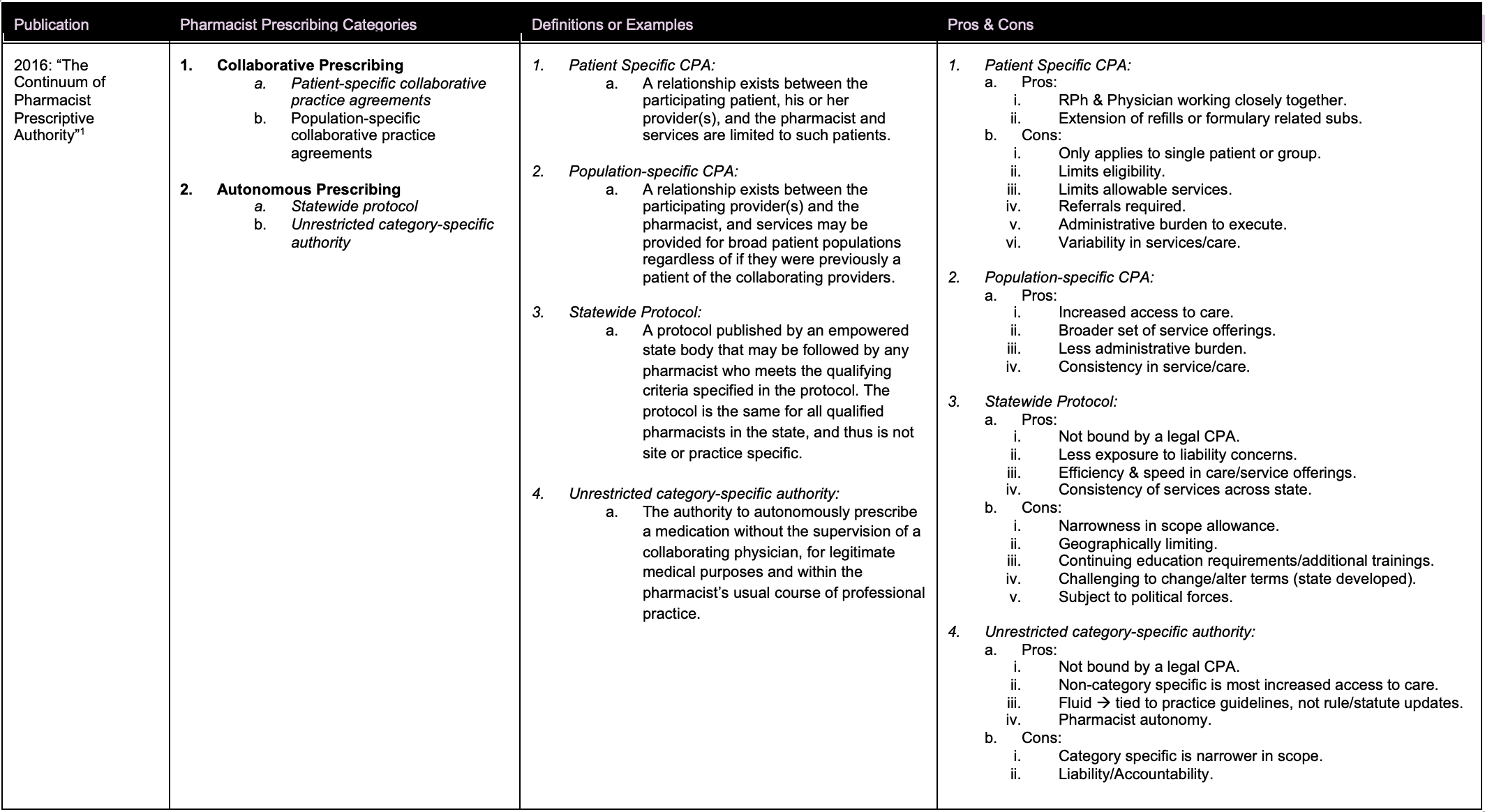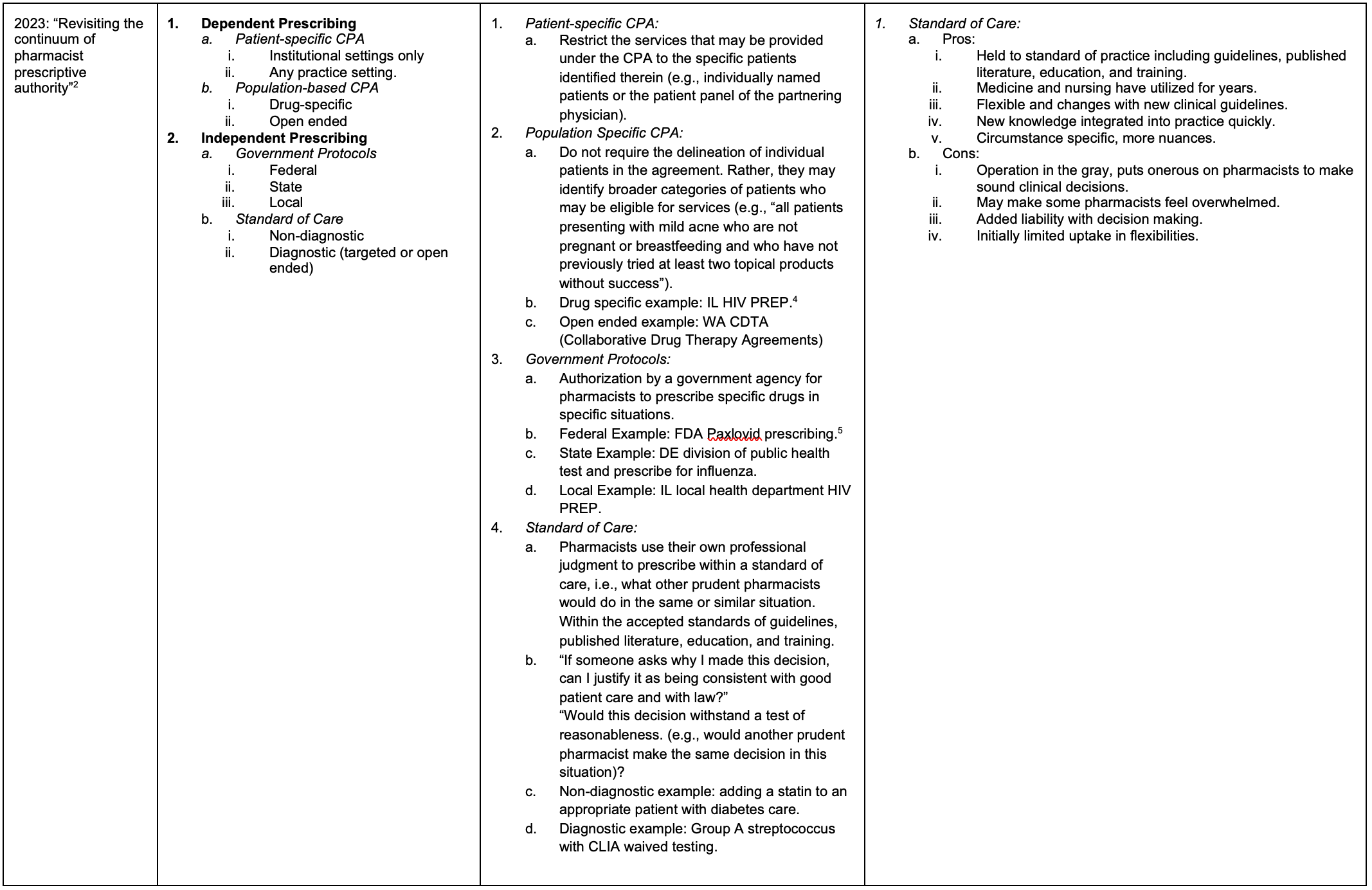Commentary
Article
Understanding the Continuum of Pharmacist Prescribing
Author(s):
It is crucial to continue to evolve from dependent prescribing to an independent model, and address barriers with opportunities for change.
The concept of prescribing medications, vaccines, tests, or medical devices has been around for years. The origins of prescribing date back centuries when physicians would treat individuals with a range of aliments. More recently, medicine, education, training, and research have evolved to expand prescribing authority to various health care professionals.
As populations have grown, the needs, offerings, and services in health care have followed. Pharmacists have been well positioned through their extensive education as medication and disease state experts to prescribe. Nay-sayers of the role often ignore the multitude of published evidence that backs up positive outcomes, safety, and increase in access to care associated with pharmacist prescribing.
Image credit: goodmanphoto | stock.adobe.com

However, the concept and categorization of pharmacist prescribing can be confusing and tough to navigate. With a landscape of varying state laws, lingo, and practice models, this article aims to help define, clarify, and elevate the idea of pharmacist prescribing.
The idea of a continuum of pharmacist prescriptive authority originates from an article first published in 2016 by Adams et al.1 A recent update titled “Revisiting the Continuum of Pharmacist Prescriptive Authority” was published in July of 2023.2 The 2016 article originally broke down pharmacist prescribing into 2 categories and 4 sub-designations. The Table below provides a summary, definitions, and pros/cons to help illustrate the concept and how it has evolved from 2016 to 2023.


Both articles attempt to categorize types of prescribing and sub-categorize nuances within. One key detail to note is that each paper also labels the categories and sub-categories on a scale from most to least restrictive (in terms of allowances).1,2 To better align as a profession from a practice, advocacy, and educational perspective, having a baseline understanding of prescribing is critical. As states and federal agencies continue to examine laws, rules, and policies around this topic, having a common nomenclature helps.
Another article by Adams, published in 2022, examines the various decentralized models for expanded prescribing.3 It provides a summary of the laws in 5 states that have created a decentralized model for determining which drugs pharmacists may independently prescribe, which further builds upon concepts brought forth in the revised continuum. The continuum points out the differences between various types of prescribing, which in turn helps state boards of pharmacy, lawmakers, advocacy groups, associations, and everyday pharmacists align.3
As the 2022 article says, moving pharmacy from a “dependent” model to an “independent” model should be a priority for the profession. The authors write, “For pharmacists to be truly recognized as health care providers, the ability to act independently is paramount. Independent prescribing replicates the model that has been proven successful for other health care professionals, namely physicians and advanced practice nurses, and therefore should be the model that pharmacists emulate.”3
They add that, “The power to delegate also includes the power to undelegate. The other health care provider can cancel or amend a [collaborative practice agreement] at any point in time.”3
Of course, with every opportunity comes challenges, and pharmacist prescribing is no outlier. A few common barriers include lack of time, payment for services, fragmented care, lack of training, increased liability, conflicts of interest (with dispensing), low patient uptake, and more.
Although there is no “silver bullet” to perfectly address all challenges, there are opportunities and methods to mitigate. Lack of time can be addressed by improving various areas to expedite efficiencies such as expanded use of technology, automation, and artificial intelligence. In addition, red tape reduction is critical to allow for expanded delegation of technical tasks to pharmacy technicians and other support staff alongside improving staffing models and workflow. Both concepts help to decrease the amount of time pharmacists spend on technical and non-efficient tasks and increase the likelihood of safety and efficiency.
Payment for services is complex but can be piloted with private or public insurers, offering services for cash, and replicating examples or models from other services or health care professionals. Fragmented care can be handled by ensuring proper documentation and communication with patients and other members of their health care team. Moving toward integrated and shareable electronic medical records is another proposed solution.
Lack of training is subjective and dependent on individuals and their practice areas. Regardless, multiple groups have offered various training platforms for pharmacists in the past and have many opportunities as needed. Liability insurance is available for pharmacists and taking on additional liability of a new service is not uncommon. Again, this is somewhat of a subjective concept that can be mitigated but also a professional risk individuals would need to be willing to accept on behalf of serving their patients.
Conflicts of interest (for those who dispense) can be handled through standards of good practice alongside proper company policies and procedures. Low patient uptake is likely due to a multitude of factors, but lack of advertising and self-advocacy contributes. Patients can be made aware of new services through proper signage, verbal communications, pamphlets, mailings, emails, text message, social media, and many other proven methods to increase awareness.
Although there are further nuances and details to each of these barriers, hopefully the simple concepts of critical thinking, problem solving, and opportunity costs have become more apparent. Focusing on what is best for the patient and keeping access to care in mind are also vital. It is crucial to continue to evolve from dependent prescribing to an independent model, and address barriers with opportunities for change.
About the Author
Deeb D. Eid, PharmD, RPh, is senior advisor of regulatory affairs and is founder and creator of the RxPOSED Podcast.
References
- Adams AJ, Weaver KK. The Continuum of Pharmacist Prescriptive Authority. Ann Pharmacother. 2016;50(9):778-84. doi:10.1177/1060028016653608
- Adams AJ, Weaver KK, Adams JA. Revisiting the continuum of pharmacist prescriptive authority. J Am Pharm Assoc (2003). 2023;63(5):1508-1514. doi:10.1016/j.japh.2023.06.025
- Adams AJ, Frost TP. Pathways to pharmacist prescriptive authority: Do decentralized models for expanded prescribing work? Res Social Adm Pharm. 2022;18(4):2695-2699. doi:10.1016/j.sapharm.2021.07.016
- Adams AJ, Klepser ME. Pharmacist Prescribing Models for HIV Pre-exposure and Post-exposure Prophylaxis. Ann Pharmacother. 2023:10600280231187171. doi:10.1177/10600280231187171
- Adams AJ, Eid D. Federal pharmacist paxlovid prescribing: a model policy or impediment to optimal care? Explor Res Clin Soc Pharm. 2023;9:100244





